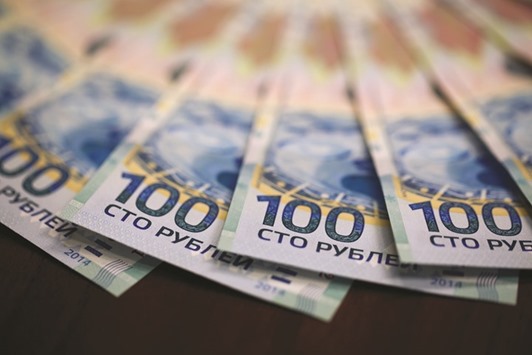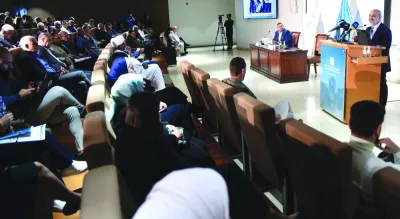Russia’s rouble traded at the strongest level in three months as a spike in oil prices coincided with a statement from the central bank signalling its hawkish stance may prevail.
The currency advanced 0.9% to 67.5150 against the dollar in Moscow, after policy makers said they will keep their benchmark borrowing rate unchanged at 11% for a fifth meeting. That brought the rouble in line with the most bullish of about 40 forecasts for the end of the first quarter and coincided with a jump in the price of Brent, which together with natural gas contributes almost half of Russia’s budget revenue.
“It’s hard to disentangle the effects of oil and the central bank’s decision,” said Liza Ermolenko, a London-based analyst at Capital Economics. “While monetary policy can have a short-term impact on the rouble, in the medium to long term it will still be determined predominantly by oil prices.”
After sinking to its weakest level on record in January, crude’s rally from a 13-year low has helped make the rouble the best-performer globally in the past month.
Yesterday’s appreciation means the currency is trading almost 10% stronger than analysts’ second-quarter forecasts, which turned bearish at the start of the year after the rouble tumbled. Nomura, the rouble’s top forecaster in 2015, sees the Russian currency at 70 per dollar by the end of June.
Speaking at a press conference after the meeting, central bank Governor Elvira Nabiullina said she isn’t convinced rouble’s recent gains amount to a strengthening trend.
“The factors currently influencing the exchange rate could soon prove to be quite volatile,” she said at a press conference in Moscow. “We don’t see a firm trend here.”
While the rouble’s one-month historical volatility has declined to near the lowest level since January as oil gained, options data predict the currency’s swings in the next three months will be the widest globally after Argentina’s peso.
Nabiullina is caught in a vise between inflation pressures that are best addressed through tighter monetary policy and the need to spur the economy out of recession, accomplished through stimulus and lower rates. She halted an easing cycle after July 31 as a sinking ruble increased inflation risks. At the last meeting in January, policy makers said they were weighing the possibility of rate increases.
The rouble’s recovery had led bond traders to speculate the Bank of Russia would return to its easing cycle – a shift that yesterday Nabiullina signalled may be premature.
“To enable the accomplishment of inflation targets, the Bank of Russia may conduct its moderately tight monetary policy for a more prolonged time than previously planned,” the central bank said in today’s statement.

The rouble advanced 0.9% to 67.5150 against the dollar yesterday.


